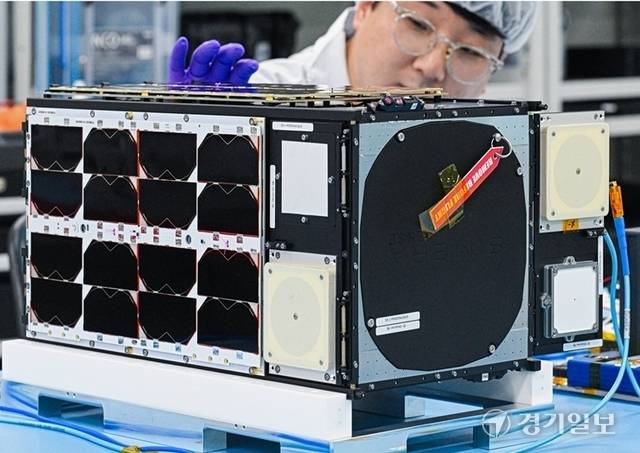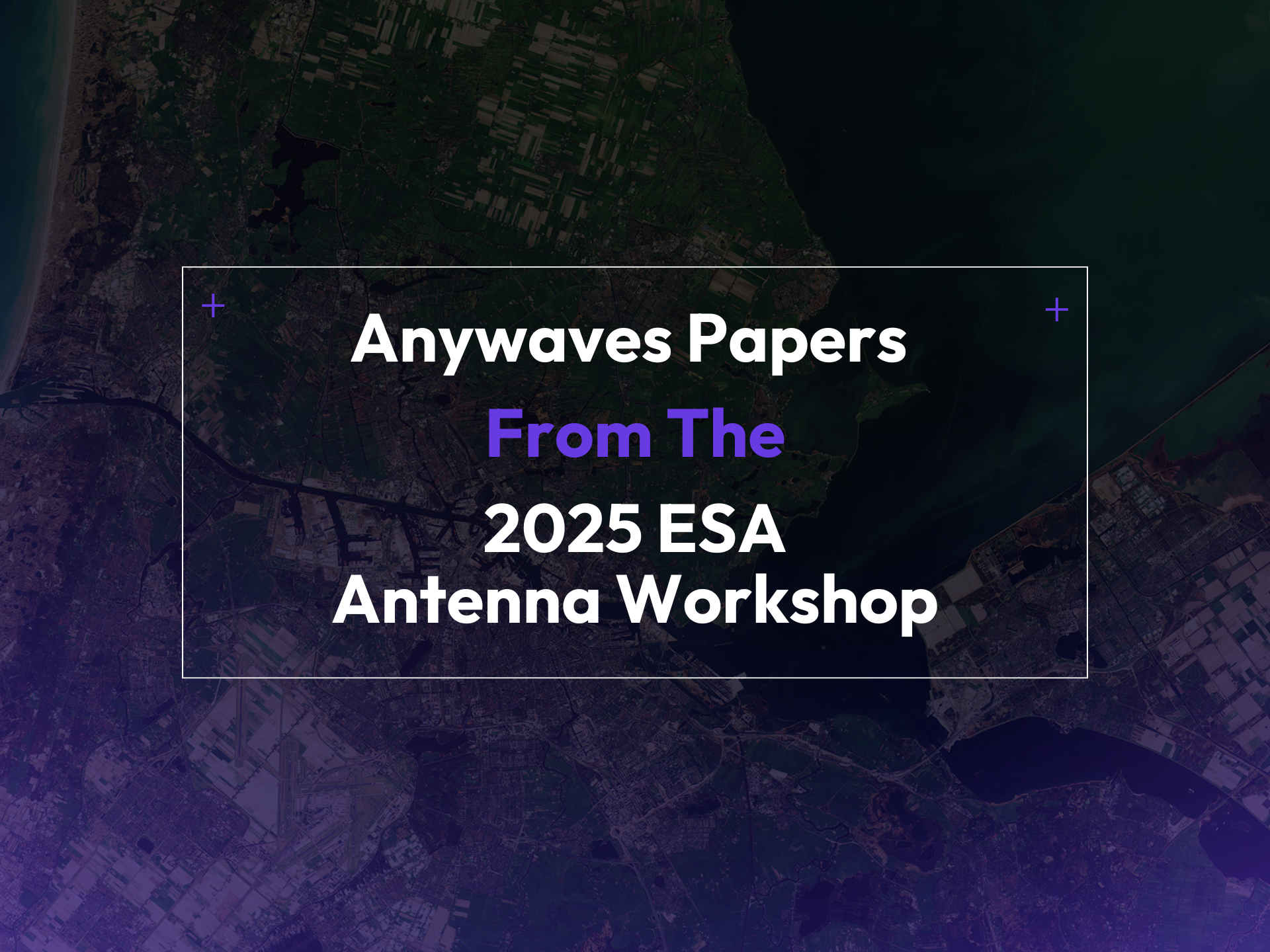Anywaves Antennas Onboard Celeste: Powering Europe’s First LEO-PNT Demonstrator
Anywaves Provides the Antennas – Including Payload Antennas – for the Celeste (LEO-PNT) Programme
The world increasingly runs on timing and positioning signals that we never see. They synchronise power grids, financial transactions and transport networks – and they guide everything from smartphones to critical infrastructure. But today’s GNSS constellations, mostly in medium Earth orbit, are under pressure: demanding applications need more resilience, better availability in harsh environments and tighter accuracy.
This is precisely where ESA’s Celeste (LEO-PNT) mission comes in: a new low-Earth-orbit layer of navigation satellites designed to augment and strengthen Galileo and EGNOS as part of a multi-layer European PNT architecture.
Anywaves is proud to contribute to this European effort by designing and delivering the antennas for one of the two Celeste demonstrator constellations, under contract with Thales Alenia Space, prime contractor for one of the LEO-PNT in-orbit demonstrator (IOD) missions. This includes the navigation payload antenna – a deployable L-band helix – as well as additional antennas supporting the mission’s service and experimentation needs.

LEO PNT satellites orbiting pillars. CREDIT: ESA – P. Carril
Celeste: A Low-Earth-Orbit Layer to Reinforce European Navigation
Celeste is the first mission in ESA’s LEO-PNT programme. It will field a constellation of 10 satellites plus two spares in low Earth orbit, around 510 km altitude, to broadcast navigation signals in several bands and test new concepts for robust, high-performance PNT services.
Two parallel industrial consortia, led by Thales Alenia Space (France) and GMV (Spain) respectively, are developing the space segment. The first satellites, known as Pathfinder-A, will be launched together on a Rocket Lab Electron from New Zealand, with deployment into a quasi-polar orbit at about 510 km.
From there, Celeste will:
- Test innovative signals across multiple frequency bands
- Demonstrate how a LEO layer can complement Galileo and other GNSS
- Explore new services in difficult environments: deep urban areas, polar regions, under foliage and indoors
- Contribute to Europe’s long-term multi-orbit navigation strategy as part of the FutureNAV programme
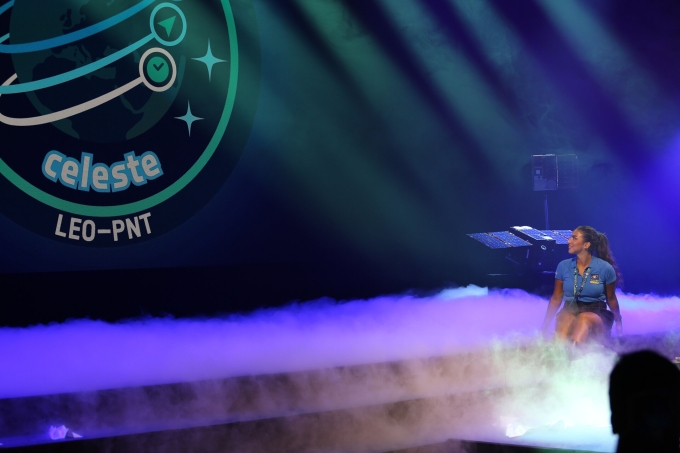
The name was announced during the celebration of 30 years of European satellite navigation, in September 2025 with two actors enacting a fictional conversation between Galileo Galilei and his imagined great granddaughter Celeste, a satellite navigation engineer working at the European Space Agency (ESA). CREDIT: ESA/M. Polo
A Human and European Story of Collaboration
Behind the acronyms and technical choices, Celeste is also a human story. It brings together:
- ESA teams defining the FutureNAV roadmap and LEO-PNT concept
- Two industrial consortia led by Thales Alenia Space and GMV, coordinating more than 50 entities from 14 countries
- SMEs and specialised companies such as Anywaves, contributing focused expertise in antennas and RF payloads
For the Anywaves engineering and production teams, seeing their antennas fly on Pathfinder-A and later on Pathfinder-B is more than just another delivery. It is a tangible, visible way to contribute to Europe’s autonomy and leadership in satellite navigation.
We are deeply aware that a mission like Celeste is a collective effort. Anywaves provides one essential part – the antennas – and we are proud that this part supports the ambitions of ESA, Thales Alenia Space, GMV and all the partners involved.
Anywaves’ Role: Antennas at the Core of the Celeste Demonstrator
Within the Thales Alenia Space consortium, Anywaves has been entrusted with the design, qualification and delivery of the antennas required for the mission, including:
- The navigation payload antenna in L-band – a deployable quadrifilar helical antenna mounted on a deployable mast
- A GNSS service antenna to support the satellites’ own navigation needs
- Additional deployable helical antennas in C- and S-bands for the Pathfinder-B satellites, enabling experimentation with multiple frequency bands
- A new L-band antenna for subsequent satellites of the demonstrator constellation
Flying first on Pathfinder-A, the Anywaves antenna suite helps validate the LEO-PNT system concept end-to-end: from signal generation in orbit to reception on test user receivers and performance assessment on the ground.
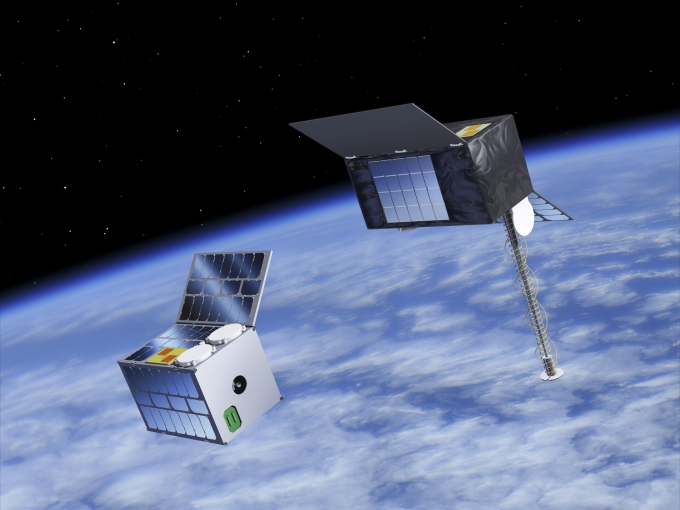
LEO PNT satellites pillars. Credit: ESA
A Deployable Quadrifilar Helix for L-Band Navigation Payloads
A Compact Antenna Optimised for Small Satellite Platforms
The navigation payload antenna delivered by Anywaves is a deployable quadrifilar helix operating in L-band. It is designed specifically for:
- Small satellite platforms (12U/16U class) where every cubic centimetre and gram counts
- Low-Earth-orbit operation (≈510 km) with frequent passes and dynamic geometry
- Navigation-grade circular polarisation and a controlled radiation pattern
To reconcile these constraints, the antenna uses:
- A quadrifilar helix radiator, providing near-hemispherical coverage with smooth gain roll-off
- A deployable mast to stow the radiating structure during launch and extend it in orbit
- A very favourable stowed/deployed ratio, freeing volume inside the spacecraft for other subsystems
This architecture allows a compact stowed configuration compatible with the launcher’s dynamic environment while providing sufficient electrical length in the deployed state for efficient L-band operation.
RF Performance for a Navigation Payload
From an RF standpoint, the antenna is engineered to support the mission’s navigation objectives:
- Stable circular polarisation across a wide range of look angles, reducing multipath and polarization mismatch at the user receiver
- Controlled axial ratio and phase centre stability, key for precise timing and ranging experiments
- Optimised impedance bandwidth in L-band for robust link margins with the selected waveforms
- Homogeneous ground illumination, avoiding excessive gain peaks and nulls that would lead to coverage holes or uneven power flux density
The result is an antenna tailored for consistent signal quality at user level, a prerequisite for any meaningful LEO-PNT performance demonstration.
Structural and Environmental Robustness
Mechanically, the deployable helix has been designed to withstand the full mission profile:
- Launch loads: random vibration, sine, shock and acoustic environments consistent with small-satellite launch on Electron
- Deployment reliability: a robust mechanism with appropriate redundancies and margins, qualified through test campaigns
- LEO environment: materials and interfaces compatible with thermal cycling, vacuum, radiation and atomic oxygen exposure over the mission lifetime
Under the Celeste IOD contract, Anywaves has delivered:
- One qualification model (QM) for environmental and RF test campaigns
- Two flight models (FM) for integration on the first satellites
This validates both the design and the underlying development and manufacturing processes, and confirms Anywaves’ ability to deliver flight-ready payload antennas on tight schedules.
GNSS and Multi-Band Antennas to Enable System-Level Innovation
Alongside the navigation payload antenna, Anywaves is also providing:
GNSS Service Antenna
Each Celeste satellite must know its own orbit and attitude with precision. For this, it relies on GNSS receivers and dedicated antennas. Anywaves’ GNSS service antenna is designed to:
- Receive GNSS signals (e.g. Galileo, GPS) in L1/E1
- Offer high phase centre stability and low group delay variation, supporting precise orbit determination
- Provide robust reception even during attitude manoeuvres and under varying satellite orientations
This internal navigation capability is essential for demonstrating LEO-PNT performance, as user-level accuracy depends strongly on how well satellite orbits and clocks are known.
Additional Deployable Helical Antennas in C and S Bands
For the later Pathfinder-B satellites, Anywaves is developing additional deployable helical antennas in C- and S-bands. These antennas will enable the mission to:
- Test new signals and frequency plans beyond the initial L-band configuration
- Assess performance in different propagation conditions, including penetration and robustness aspects
- Explore new service concepts, from enhanced timing to complementary communication and navigation services
This multi-band approach is central to Celeste’s role as an in-orbit experimentation platform rather than just a single-service demonstrator.

CREDIT: ESA – F. Zonno
Why LEO-PNT Changes the Navigation Landscape – and Why Antennas Matter
LEO-PNT is not about replacing existing GNSS constellations; it is about completing them.
With satellites at around 510 km instead of 20 000 km, LEO-PNT can offer:
- Stronger received signals at user level, improving robustness against interference
- Faster geometry change (more dynamic Doppler), which can be exploited for improved positioning in certain scenarios
- Better penetration in complex environments (urban canyons, foliage, some indoor scenarios)
- Additional diversity (orbit, frequency, signal structure) that strengthens overall resilience
In this context, the antenna system is a strategic asset. It directly determines:
- The link budget and margins available for complex waveforms
- The coverage uniformity and service continuity for moving users
- The polarisation purity and susceptibility to multipath and interference
- The overall reliability of the transmitted and received signals
By providing antennas specifically designed for the navigation payload and multi-band experimentation, Anywaves contributes directly to the technical credibility of the Celeste demonstration.
Industrial Performance: From Concept to Flight Models in Under 18 Months
One of the challenges of Celeste is tempo. The first satellites are planned to launch in late 2025, less than two years after kick-off, in order to bring the LEO-PNT frequencies into use and start experimentation rapidly.
For Anywaves, this meant:
- Completing the design, qualification and delivery of the navigation payload antenna in under 18 months
- Aligning antenna development with satellite AIT schedules and system-level reviews
- Ensuring that RF, mechanical and deployment testing could be carried out in compressed time frames without compromising on reliability
This acceleration is built on:
- A mature industrial base in Toulouse
- EN 9100 quality management
- Proven processes for RF design, environmental testing and serial production of space antennas
The Celeste antennas benefit from several generations of heritage and know-how accumulated on previous missions.
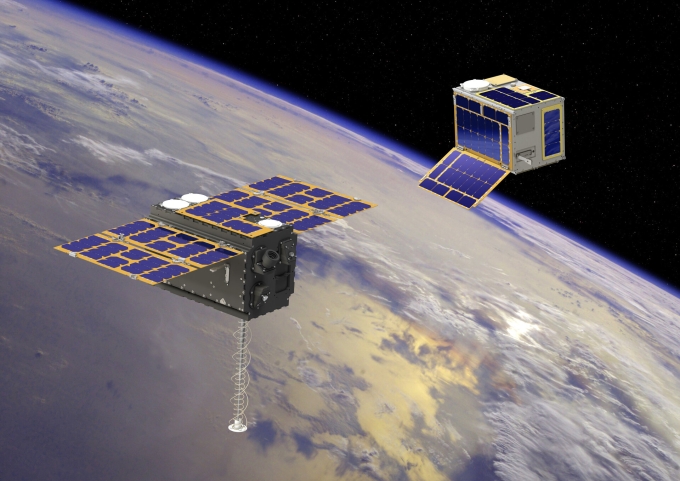
LEO PNT Pathfinder A. Credit: ESA
Building on a Track Record in Payload Antennas
The Celeste contract is a new step in a trajectory that has seen Anywaves move from an innovative newcomer to a recognised industrial partner for payload antennas.
Recent milestones include:
- The first commercial Reflectarray antenna deployed in orbit, demonstrating Anywaves’ ability to deliver complex payload apertures
- Successful collaboration with Thales Alenia Space starting in 2020 and materialised in orbit in 2022 with Omnispace Spark-1™, equipped with Anywaves antennas
- A growing portfolio of custom and off-the-shelf antennas for LEO and GEO missions, covering communication, TT&C, data downlink and GNSS applications
With Celeste, Anywaves adds LEO-PNT navigation payload antennas and multi-band deployable helices to this heritage, reinforcing its position as a specialist supplier of critical RF equipment for constellation-class missions.
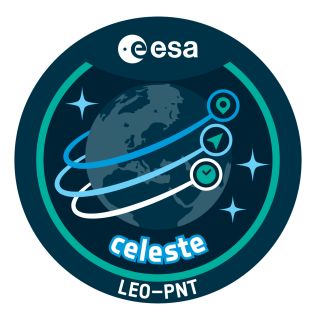
Celeste mission patch. Credit: ESA
Conclusion
Celeste marks a decisive step toward a more resilient and capable European navigation infrastructure. For Anywaves, contributing to this mission through the delivery of its payload and multi-band antennas is both a technological achievement and a source of genuine pride. These antennas — from the deployable L-band helix to the GNSS and multi-frequency radiators — reflect the expertise, precision and agility that our teams bring to every project.
As the first Celeste satellites approach launch, Anywaves stands alongside ESA, Thales Alenia Space, GMV and all programme partners in advancing the future of LEO-based PNT services. This mission illustrates how Europe can innovate quickly, collaborate effectively and push satellite navigation into a new era. And we are honoured that part of this journey will be powered by antennas designed and built in Toulouse!
Contact
us
If you have any question, we would be happy to help you out.
